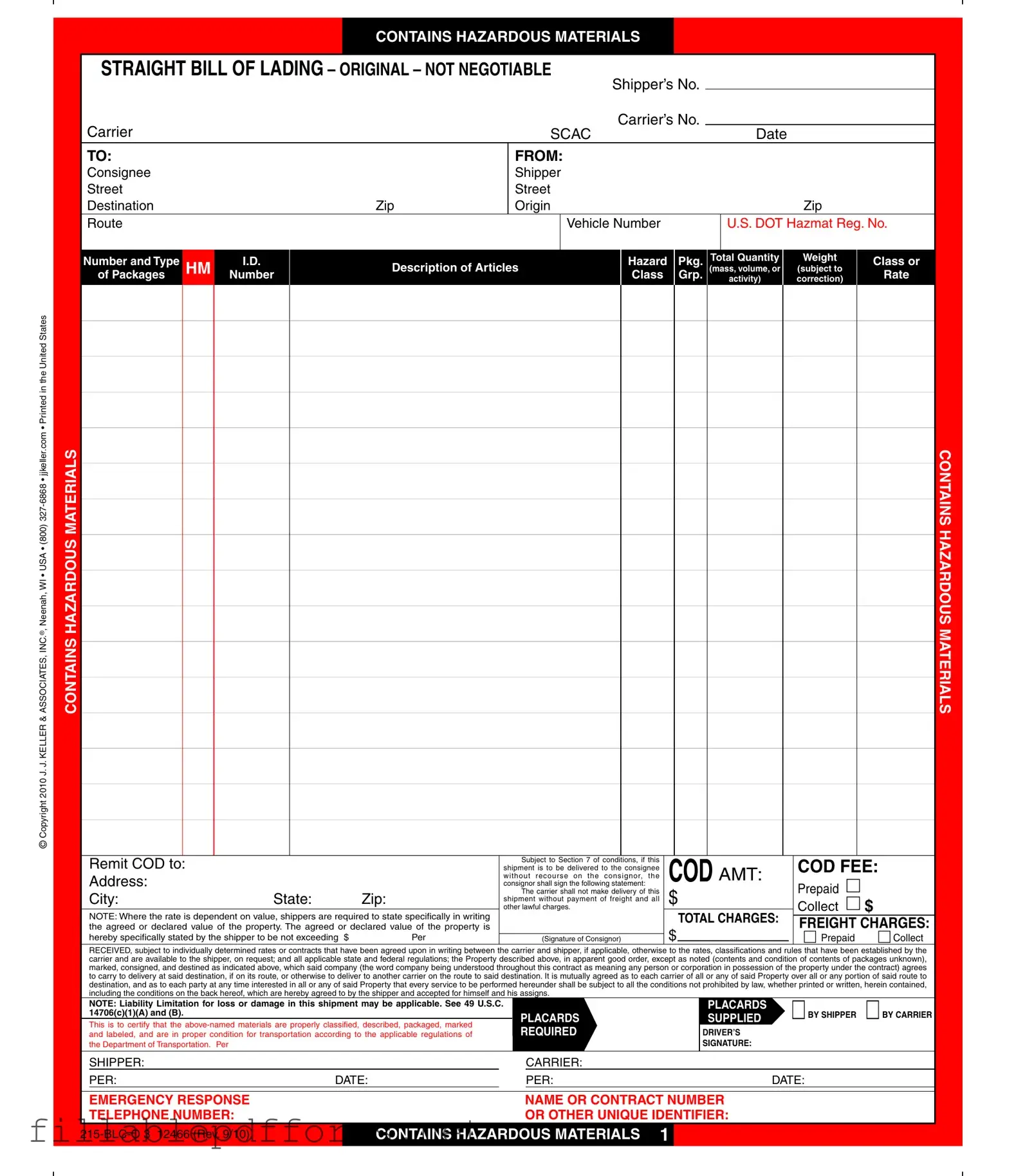Hazard Bill Of Ladden PDF Template
The Hazard Bill of Lading is a crucial document used in the transportation of hazardous materials. It serves as a receipt for the goods being shipped and outlines the responsibilities of the shipper and carrier. Understanding this form is essential for ensuring compliance with safety regulations and protecting all parties involved in the shipping process.
Launch Editor Here
